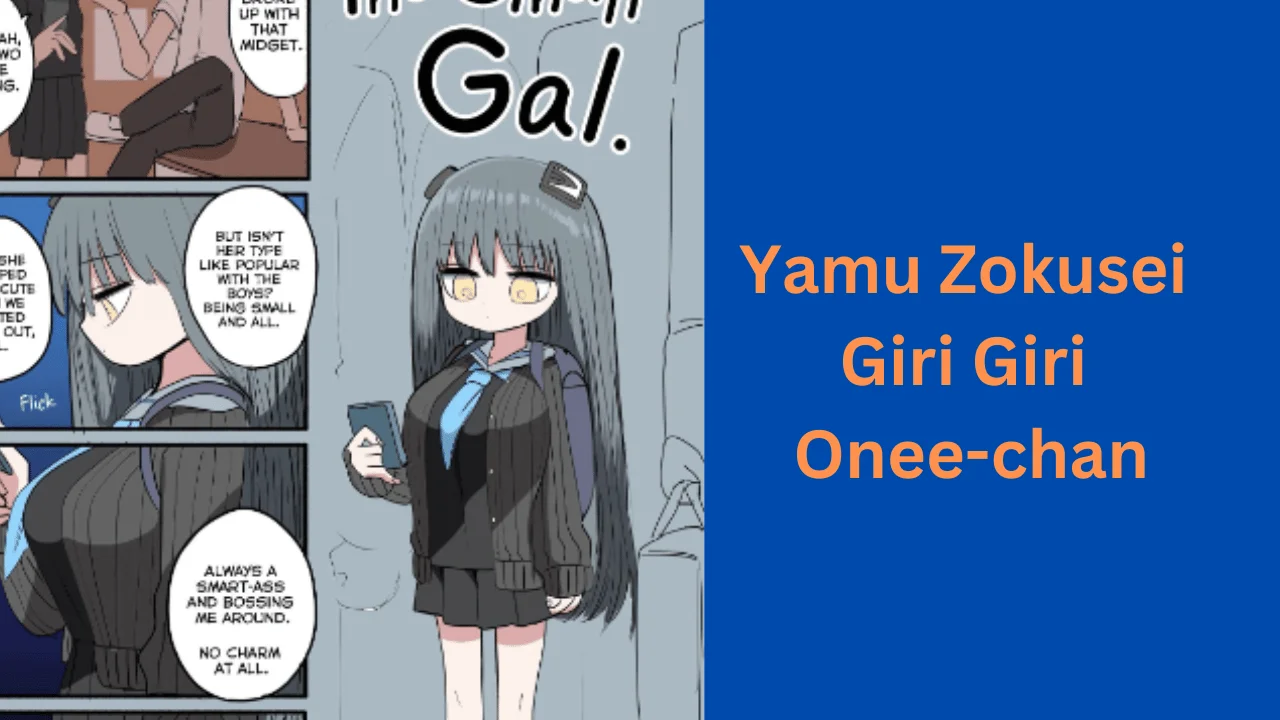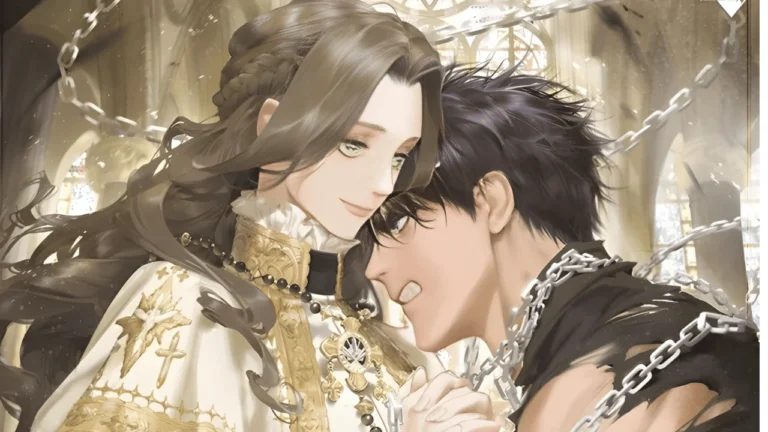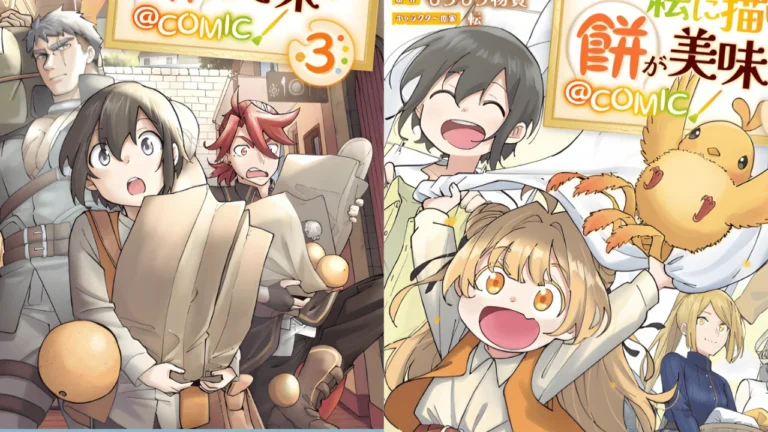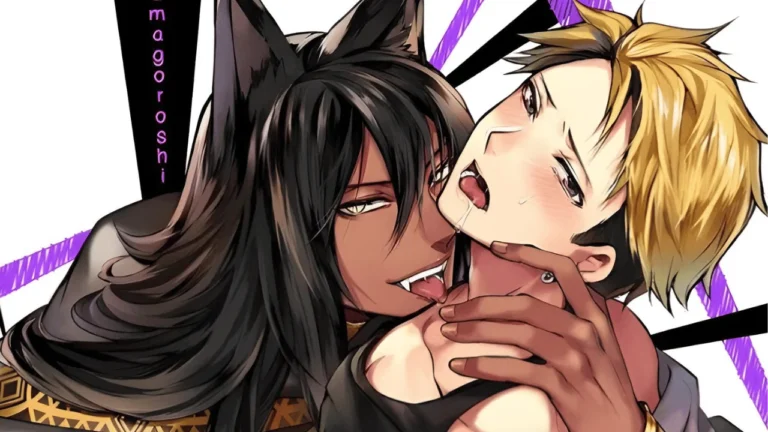Yamu Zokusei Giri Giri Onee-chan

Introduction
Numerous archetypes in the expansive Japanese manga and anime canon enthrall readers and viewers with their distinct personalities and interesting backstories. An interesting archetype is the “Yamu Zokusei Giri Giri Onee-chan,” a character who exemplifies the stereotypical role of an older sister by being both overprotective and caring. This article examines this archetype in detail, looking at its cultural relevance, characteristics, and influence on Japanese media.
What is Yamu Zokusei Giri Giri Onee-chan?
Defining the Archetype
In Japanese animation and comics, the term “Yamu Zokusei Giri Giri Onee-chan” has a deep cultural meaning. “Yamu Zokusei” implies “complex attributes,” and “Giri Giri” connotes being “on the edge.” In this context, “onee-chan” means an older sister. All things considered, this persona exemplifies the perfect older sister role, with just the right amount of protectiveness without being nannyish.
Characteristics of the Archetype
Perfection in Responsibility
Many depictions of these heroes highlight their exemplary sense of duty. They are responsible for running the home, looking after their siblings, and frequently taking on the role of a parent. They are absolutely necessary to the family dynamic because of this quality.
Excessive Protectiveness
Their concern, however commendable, frequently transcends into
excessive vigilance. This dynamic tension drives many storylines and can cause tensions when younger siblings try to find their own way.
Nuanced Affection
Their devotion for one another is deep and complex. There is a wide spectrum of emotions reflected in it, from mild and understanding to harsh and disciplinarian.
Idealized Yet Relatable
The characters’ imperfections and vulnerabilities, which are shown as the story progresses, make them relatable, even if they are practically perfect. Because of how relatable they are, their stories become more captivating for audiences.
Influence in Japanese Media
An archetype that permeates Japanese storytelling, the Yamu Zokusei Giri Giri Onee-chan has an impact on countless stories and character arcs. The cultural value of family and the social expectations put on older siblings are mirrored in this.
Anime Elder Sister Archetype
Role in Family Dynamics
The older sister frequently takes the lead in anime when it comes to keeping the peace in the family. The significance of family duties in Japanese culture is shown by her choices and actions, which have a major impact on the plot.
Balancing Authority and Empathy
These individuals demonstrate a profound comprehension of their siblings’ needs while skillfully balancing their authoritative role with empathy. To show them as complete people, this equilibrium is essential.
Conflict and Resolution
Their siblings’ need for autonomy and their own protective nature are inherently at odds with one another, leading to intense arguments. Character growth and story advancement rely on these conflicts and how they are resolved.
Cultural Reflection
Duties, sacrifice, and the complexities of family love are some of the larger cultural issues reflected in the archetype. People enjoy it because they can relate to the stories because they reflect their own family dynamics.
Iconic Examples in Anime
A number of famous anime series notably feature this archetype. Sango from “Inuyasha” and Nunnally from “Code Geass” are two examples of characters that exemplify these attributes, demonstrating how popular they are.
Manga Overprotective Onee-chan
Narrative Impact
In many manga, the story is propelled by the overprotective older sister. Her choices and deeds provide the story its structure and character development.
Emotional Depth
Through dialogue and internal monologues, we get a sense of the characters’ complex emotions. The story becomes more interesting and relatable as a result of these explorations.
Visual Representation
Manga artists enhance the storytelling experience by using visual cues, such as detailed surroundings and expressive eyes, to portray the emotional moods of these characters.
Character Evolution
Typically, these personalities go through a lot of growth, changing from overprotective to more balanced people. Their allure and continued importance stem from this progression.
Audience Connection
Readers feel a close connection to the characters and their growth through their relatable hardships, which enhances the overall impact of the manga.
Japanese Cultural Sibling Dynamics
Traditional Expectations
Taking on substantial obligations is typically expected of older siblings, particularly sisters, in Japanese culture. The media’s depiction of Yamu Zokusei Giri Giri Onee-chan reflects these expectations.
Family Hierarchies
Anime and manga often deal with the topic of older siblings holding positions of power, reflecting the hierarchical structure of Japanese homes.
Interpersonal Relationships
Cultural conventions and expectations shape the dynamics between siblings, which provide enough fodder for narratives. Subtlety and sensitivity are often used to portray these interactions.
Conflict and Harmony
Resolving disputes within families typically results in improved harmony and understanding, as they are a result of the friction between personal wishes and established roles.
Cultural Resonance
Readers who are well-versed in these cultural dynamics will find great comfort and insight in these tales, which will allow them to laugh and think about their own family histories.
Borderline Elder Sister Traits
Overwhelming Presence
As a result of their borderline personality qualities, these characters frequently cause dramatic and humorous situations with their siblings.
Protective Instincts
They strike a fine balance between being overly protective and being overly controlling, even though their intentions are good.
Emotional Complexity
Their multi-dimensionality and compellingness are enhanced by the emotional complexity of these individuals, who skillfully navigate the delicate balance between love and control.
Narrative Function
Both the development of the characters and the driving force behind the story’s conflict and ending are aided by these characteristics.
Viewer Engagement
Viewers are captivated by the story and develop a stronger bond with the characters due to the realistic and complex depiction of these qualities.
Idealized Elder Sister in Anime
Aspirational Figures
Many people look up to these heroes because they exemplify admirable traits like strength, responsibility, and care.
Balancing Idealization and Reality
Although these people are glorified, they also have genuine weaknesses and imperfections that make them more approachable and human.
Influence on Younger Characters
They have a significant impact on the younger characters, helping to shape their decisions and development while also offering support and direction.
Narrative Significance
Many stories rely on the idealized depiction of these characters to ground the story emotionally and morally.
Effects on Society
Cultural ideals, such as the significance of family and the wisdom and assistance offered by older siblings, are reflected in anime’s idealization of older sisters.
Giri Giri Onee-chan Character Analysis
Psychological Depth
By delving into their inner lives, we can learn about the complexity of familial love, the weight of responsibility, and the significance of sacrifice.
Narrative Function
They play a crucial part in the story, bringing forth conflict and resolution and showcasing how the characters evolve.
Cultural Reflection
These characters’ depictions provide light on cultural norms and family interactions, which in turn reflect larger cultural concerns.
Viewer Engagement
Viewers are captivated by the characters’ sympathetic and complex representation, which allows them to immerse themselves in the plot and develop a stronger bond with them.
Comparative Analysis
Looking at these characters in various anime and manga shows that they share characteristics and topics, which shows how popular and relevant this archetype is.
Sibling Responsibilities in Manga
Role Modeling
As a representation of the value of family duties, older sisters in manga frequently act as mentors to their younger siblings.
Balancing Act
Their duties frequently need juggling their personal wants and needs with those of their family, which provides a wealth of material for story conflict and growth.
Emotional Support
As they assist their siblings in overcoming obstacles and developing into their full potential, they play a crucial role in providing emotional support.
Conflict and Resolution
Compelling tensions drive character development and plot growth, as their protective attitude and their siblings’ desire for independence are constantly at odds with one another.
Cultural Significance
As a whole, manga shows how important family is and how older siblings should be there to help younger ones along by highlighting the duties of each sibling.
Anime Familial Role Dynamics
Central Themes
A lot of anime revolve around family role dynamics, which gives a lot of material for stories and character growth.
Balancing Authority and Empathy
Relationships in these contexts are difficult and fascinating because they require a balance between empathy and authority.
Conflict and Resolution
Resolving disputes within families typically results in improved harmony and understanding, as they are born out of the natural tension between human needs and established roles.
Character Development
Opportunities for growth and transformation are presented by the examination of familial roles, which fosters character development.
Viewer Engagement
Viewers are captivated by the story and develop a stronger bond with the characters due to the realistic and complex depiction of these interactions.
Intense Sibling Relationships in Japanese Media
Emotional Intensity
A rich source of emotional depth and narrative drama, intense sibling relationships are a trademark of Japanese media.
Complex Dynamics
There is a delicate balancing act between love and rivalry, between caring and controlling, between supporting one another and experiencing conflict in these partnerships.
Narrative Impact
Character development, conflict, and resolution are all shaped by the way these interactions are portrayed in the story.
Cultural Reflection
By illuminating social norms and family dynamics, these interactions mirror larger cultural concerns.
Viewer Connection
Viewers are captivated by the realistic and complex depiction of these interactions, which allows them to immerse themselves in the plot and develop a stronger bond with the characters.
Narratives of Overpowering Siblings
Overwhelming Presence
Overbearing siblings are frequently portrayed as having an overwhelming presence, which can lead to both serious and funny situations.
Protective Instincts
They strike a fine balance between being overly protective and being overly controlling, even though their intentions are good.
Emotional Complexity
Their multi-dimensionality and compellingness are enhanced by the emotional complexity of these individuals, who skillfully navigate the delicate balance between love and control.
Narrative Function
Both the development of the characters and the driving force behind the story’s conflict and ending are aided by these characteristics.
Viewer Engagement
Viewers are captivated by the story and develop a stronger bond with the characters due to the realistic and complex depiction of these qualities.
Frequently Asked Questions
What are the defining traits of the Yamu Zokusei Giri Giri Onee-chan archetype in anime?
The defining traits include perfection in responsibility, excessive protectiveness, nuanced affection, idealization, and relatability. These characters balance nurturing care with overwhelming protectiveness, creating dynamic and engaging narratives.
How does the Giri Giri Onee-chan character influence sibling dynamics in Japanese manga?
These characters often drive the narrative forward by their actions and decisions. Their protective nature creates conflict with their siblings’ desire for independence, leading to compelling stories of growth and resolution.
Examples of Yamu Zokusei Giri Giri Onee-chan in popular Japanese anime and manga.
Iconic examples include Sango from “Inuyasha” and Nunnally from “Code Geass,” both of whom embody the traits of responsibility, care, and protectiveness while navigating complex family dynamics.
Analysis of elder sister characters in anime: A look at borderline traits.
Analyzing these characters reveals a rich psychological depth, exploring themes of duty, sacrifice, and the complexities of familial love. Their borderline traits, such as overwhelming presence and protective instincts, add depth and complexity to their portrayal.
Cultural significance of overprotective elder sisters in Japanese media.
The portrayal of overprotective elder sisters reflects broader cultural themes, such as duty, sacrifice, and the importance of family. These characters resonate deeply with audiences, providing both entertainment and reflection on their own family experiences.
Conclusion
The Yamu Zokusei Giri Giri Onee-chan archetype is a fascinating and complex character type within Japanese anime and manga. Its blend of idealized traits and borderline characteristics creates dynamic and engaging narratives that reflect broader cultural themes. These characters resonate deeply with audiences, offering both entertainment and profound insights into familial dynamics and personal growth. As a staple of Japanese storytelling, the Yamu Zokusei Giri Giri Onee-chan continues to captivate and inspire, embodying the delicate balance between care and control, love and protectiveness

Stella Brooks is the creative mind behind AllVyvymanga.com, where she explores the rich tapestry of manga culture and its impact on modern entertainment. Her blog delves into the intricate storytelling and artistic innovations of manga, offering readers a blend of cultural insights and the latest trends. Stella’s work shines a light on how traditional narratives and contemporary themes intersect in this dynamic art form.






